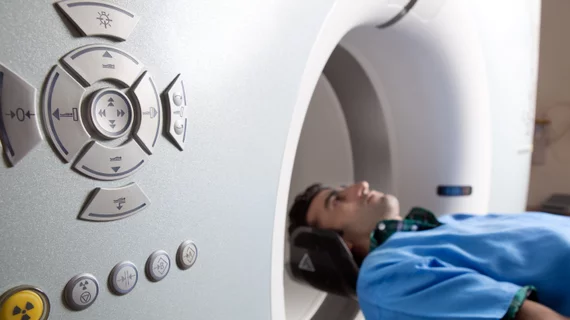Pre-procedural computed tomography could help identify heart patients prone to complex lead extractions and locate severe lead adhesions prior to intervention, according to research published in JACC: Clinical Electrophysiology.
Lead complications have become increasingly common over the years, Emma Svennberg, MD, PhD, and colleagues wrote, which makes sense seeing as how a growing population of older patients are being implanted with cardiac electronic devices. And percutaneous lead extraction—necessitated by infection, malfunction, thromboembolism or redundancy after upgrades—isn’t guaranteed to be a risk-free procedure.
Svennberg, of the Karolinska Institutet in Stockholm, Sweden, and co-authors explained that a patient’s risk for lead extraction hinges on a number of factors, including the lead’s age, cause of extraction and established clinical risk factors like female gender, lower BMI and CV comorbidities. Lead perforation, fractures and adhesions can also complicate the process.
“The inherent potential of the lead to form adhesions to the vascular wall, the myocardium or other leads can cause avulsion of venous or myocardial tissues, resulting in potentially life-threatening complications,” the authors wrote. “Leads with longer indwelling times form adhesions, but adhesions may also unpredictably appear in patients with newer leads.”
CT is currently recommended by the Heart Rhythm Society as a means to visualize leads and identify any perforations. Svennberg and her team analyzed 143 patients who underwent both computed tomography and lead extraction (LE) in an effort to determine whether CT can also help guide procedural success.
Thirty-five percent of patients in the study pool were women, and most were in their late sixties. Svennberg et al. included patients treated consecutively at the University of California, San Diego, between January 2015 and July 2018, all of whom had CTs performed within 90 days of their planned lead extraction.
The mean age of leads in the study was 111 months, or just over nine years, and the authors reported that 43% were older than 10 years. Prior to LE, CT was able to detect:
- Lead perforation of greater than 5 mm in 13 patients
- Lead perforation of less than 5 mm in 55 patients
- Severe lead adhesions in 65 patients
- Leads touching the vessel wall greater than 1 cm in 102 patients
- Lead fracture in 8 patients
- Severe ipsilateral venous stenosis/occlusion in 36 patients
Lead extraction was complex in 63 cases, Svennberg and colleagues said, and there were two deaths and six major complications in the study population. Patients with more severe lead adhesions had more complex procedures, but no other CT findings were strongly linked to worse outcomes. Predictably, patients with leads older than 10 years and severe lead adhesions saw 6.4 times the risk of a poor outcome.
The authors said that compared with other studies, theirs noted a higher detection rate of the most severe type of adhesion—leads embedded in the vessel wall. CT detected that abnormality in 45.5% of patients compared with just 11% of patients in a similar study by Ehieli et al. The team said the sizeable gap could be the result of different CT protocols and patient selection; Ehieli et al.’s study included consecutive patients while theirs initially only included patients perceived as higher-risk.
“This might have introduced a selection bias, and more significant findings would have been detected on CT compared with a consecutive inclusion,” Svennberg and co-authors wrote.
The researchers said defining the role of pre-procedural CT imaging will be “essential” to the risk assessment process for patients with implanted electronic devices.
“This study demonstrates that the use of a structured CT protocol can aid in the pre-procedure risk assessment and surgical planning,” they wrote. “Larger studies might shed additional light on risk assessment prior to lead extraction.”

